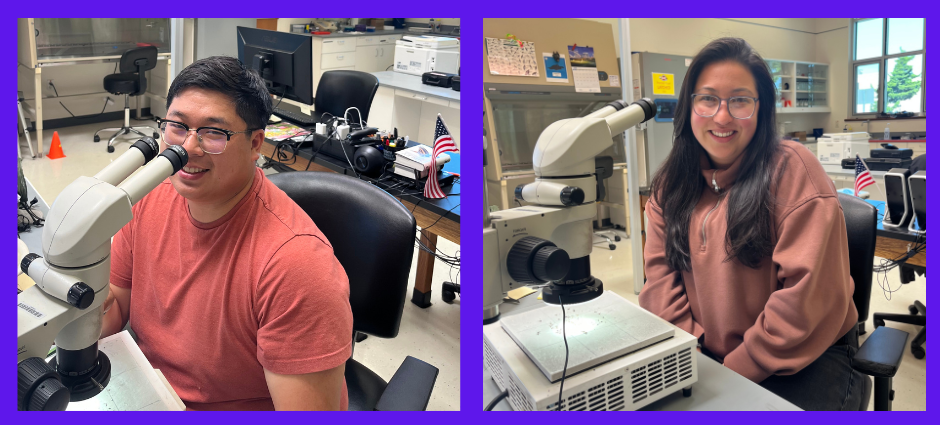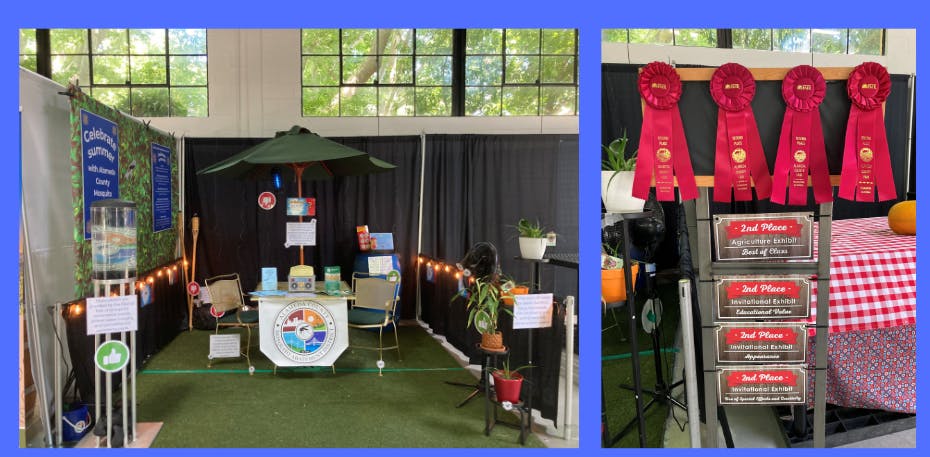Summer 2025 Newsletter
Quarterly Newsletter and Updates
Summer 2025
The Green Pool Program is back!
497 Green Pools found in Alameda County

It is summer and that means the return of the Green Pool Program. We encourage residents to clean out any green pools in Alameda County as soon as possible. Green Pools can be a major source of mosquitoes, because water from winter and spring showers will not always dry off by summer. Mosquitoes need standing water to complete their life cycle, and pools offer standing water and protection from the wind. Water that has been sitting for months often has leaves and other yard debris which provides food and cover for mosquitoes to produce.
Our process to detect green pools has been refined over the years. In late spring, our office contracts with a local pilot to conduct an aerial survey of Alameda County. The survey is connected to parcel data which determines the owner of the parcel. We use AI imagery to detect green pools and then office staff verify the final numbers of notices to send out. This year we found 497 green or unmaintained pools. The office sends notices to the location and provides residents options on how ensure their pools are mosquito-free. Residents who have a clean pool by the date they receive the notice or have mosquitofish in the pool can inform the ACMAD office, and then the office removes their pool from the Green Pool list. Residents who need assistance from the district, either in the form of mosquitofish or treatment to their pool, can contact the district.
Before the office-intensive Green Pool Project started years ago, field technicians would need to look at every known green pool in the county, which would take more than four months to complete. Now we can complete it in less than two. This process is an example of what makes the Alameda County Mosquito Abatement District an efficient and effective organization. The district uses timely data to determine which potential mosquito sources before they become major issues. By using clear communication with residents in the form of letters, social media and speaking one-on-one, we are able to reduce mosquito sources without dispatching our field operations team, which saves the district and taxpayers money in the long term. Thank you to office staff, particularly project lead Robert Ferdan, for their work on this project.
Welcome to our new staff members, Eric and Liz

The district recently hired two new staff members, Liz Martinez for a new role as Community Liaison and Eric Moyung for Assistant Vector Scientist. Liz joins the district after working for the California Department of Public Health and Sacramento-Yolo Mosquito Abatement District. She holds a Master of Public Health from UC Berkeley. Eric has been with our office for a year as a seasonal intern who extended his time here after we detected Aedes aegypti, a dangerous and invasive mosquito. He is working to complete his master’s from the University of the Pacific. Welcome to the district, Liz and Eric!
Winners at the Alameda County Fair

The district won four second place awards for our display at the Alameda County Fair. The awards were for Best in Class, Educational Value, Appearance and Use of Special Effects and Creativity. We have created displays for the fair for decades. This year the theme was "Celebrate Summer" which inspired all the gold you see in the display. Thank you to team members Judi, Erika, Liz, Miguel, John, Robert and Mark for your help on creating and maintaining the display.
Mosquitoes in the news

Locally-transmitted dengue cases are rising in California as climate change exacerbates mosquito season, extending it beyond summer and creating ideal conditions for disease-spreading mosquitoes like Aedes aegypti and Aedes albopictus. These species can transmit dengue, a painful and incurable illness now showing up in parts of the U.S. once considered low-risk.
In Alameda County we detected invasive Aedes aegypti mosquitoes in Pleasanton in 2024. After intensive treatment, inspections and ongoing surveillance, we have not found any for 2025 so far. We continue to look for them near the detection area and have reinforced messages about these dangerous mosquitoes in our outreach materials. In addition, we have presented to physicians in Alameda County about the risks of contracting dengue in California and other states, thanks to our strong relationship with Alameda County Public Health Communicable Disease Department. We encourage residents who are visiting areas with high dengue risk to wear repellent, long sleeves and pants, and to notice if they experience symptoms associated with dengue after experiencing mosquito bites. Take a few minutes before any trip to check the CDC's website: Dengue risk map
To learn more the Kaiser Family Foundation recently published an article about dengue. To read the full article, click here: As Mosquito Season Peaks, Officials Brace for New Normal of Dengue Cases
New AI bot, Ally on our website and on the phone

If you go to our website, www.mosquitoes.org, you may notice a new chatbot called “Ally.” Her name is inspired by our county, Alameda, and she can answer questions about how to sign up for a service request, questions about mosquitoes and update readers about mosquito trends in Alameda County. We are also rolling out a voice Bot on our phone line to help direct callers to the correct department faster. Let us know what you think!
When good ponds go bad
.png?ixlib=rb-1.1.0&w=2000&h=2000&fit=max&or=0&s=2817c9c9f20546ac90b3a74b791dd4ef)
When a resident requests mosquitofish by calling the office, staff will always ask how much water is in the pond, fountain or pool because if the water is too low, the fish cannot survive. We often have residents who request fish in spring but by summer the fish are dead if they are left in a location where the sun shines too brightly. Placing fish in containers where they will not survive is not just harmful to them, but it also doesn't reduce mosquito populations.
Recently one of our staff members noticed their pond in a large clay pot was turning green. For years the water was clear, but after cutting down a dying tree that cast the pond in shadow, the water heated up quickly. After returning home from a short trip, they realized the pond was bright green and no longer had mosquitofish. Within a day they found mosquito egg rafts, which are highlighted in red circles in the image above. When the water became too shallow and warm, all the fish died and mosquitoes were able to start taking advantage soon after. If this happens to your pond or water feature, you can use mosquito specific bacteria to kill the mosquitoes, or better yet, dump the water out. To learn more about pesticides to use in shallow water, see: Biological Control.

The district has found five West Nile virus positive birds, two in Castro Valley in March, two in Livermore in April and one in Union City in May. While the cooler than normal weather for spring and early summer can contribute to reduced mosquito abundance, mosquitoes can take advantage of a small amount of water, even as small as a bottle cap. Remember, mosquitoes can breed all year long in the Bay Area, so preventative activities such as removing standing water, adding mosquito fish to ponds, troughs, and neglected swimming pools will reduce our risk of West Nile virus. Visit our backyard checklist to see common places where mosquitoes produce.
